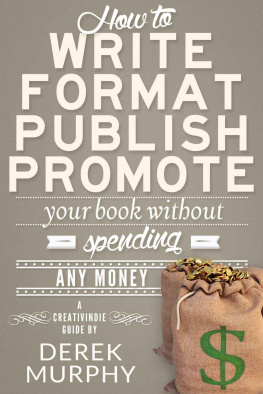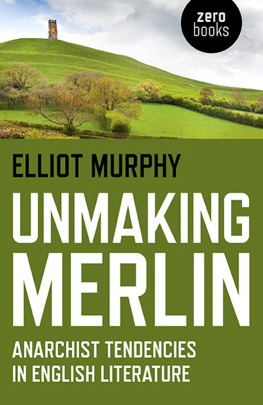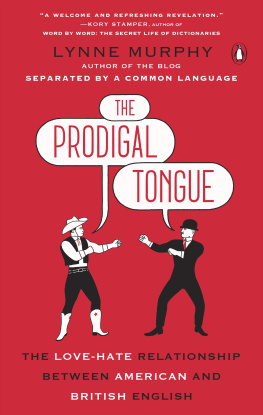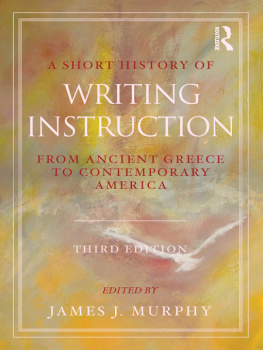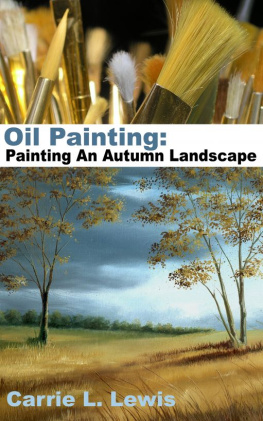Murphy - Portfolio: Beginning Oil
Here you can read online Murphy - Portfolio: Beginning Oil full text of the book (entire story) in english for free. Download pdf and epub, get meaning, cover and reviews about this ebook. year: 2017, publisher: Walter Foster Publishing, genre: Home and family. Description of the work, (preface) as well as reviews are available. Best literature library LitArk.com created for fans of good reading and offers a wide selection of genres:
Romance novel
Science fiction
Adventure
Detective
Science
History
Home and family
Prose
Art
Politics
Computer
Non-fiction
Religion
Business
Children
Humor
Choose a favorite category and find really read worthwhile books. Enjoy immersion in the world of imagination, feel the emotions of the characters or learn something new for yourself, make an fascinating discovery.

- Book:Portfolio: Beginning Oil
- Author:
- Publisher:Walter Foster Publishing
- Genre:
- Year:2017
- Rating:4 / 5
- Favourites:Add to favourites
- Your mark:
- 80
- 1
- 2
- 3
- 4
- 5
Portfolio: Beginning Oil: summary, description and annotation
We offer to read an annotation, description, summary or preface (depends on what the author of the book "Portfolio: Beginning Oil" wrote himself). If you haven't found the necessary information about the book — write in the comments, we will try to find it.
Murphy: author's other books
Who wrote Portfolio: Beginning Oil? Find out the surname, the name of the author of the book and a list of all author's works by series.
Portfolio: Beginning Oil — read online for free the complete book (whole text) full work
Below is the text of the book, divided by pages. System saving the place of the last page read, allows you to conveniently read the book "Portfolio: Beginning Oil" online for free, without having to search again every time where you left off. Put a bookmark, and you can go to the page where you finished reading at any time.
Font size:
Interval:
Bookmark:
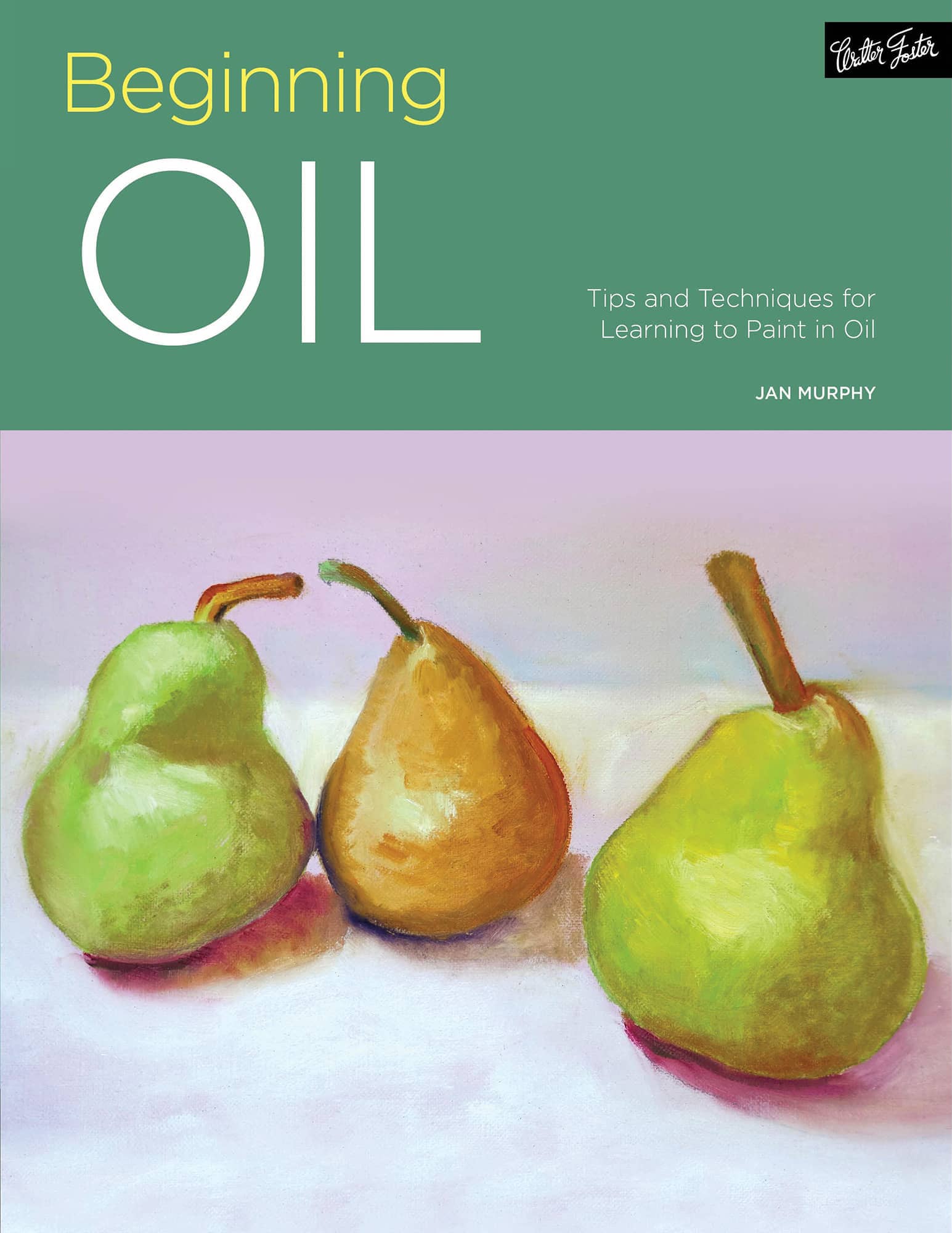
OIL
Tips and techniques for learning to paint in oil



2017 Quarto Publishing Group USA Inc.
Published by Walter Foster Publishing,
a division of Quarto Publishing Group USA Inc.
All rights reserved. Walter Foster is a registered trademark.
Artwork Jan Murphy
Design: Melissa Gerber
Digital edition: 978-1-63322-427-8
Softcover edition: 978-1-63322-193-2
All rights reserved. No part of this book may be reproduced in any form without written permission of the copyright owners. All images in this book have been reproduced with the knowledge and prior consent of the artists concerned, and no responsibility is accepted by producer, publisher, or printer for any infringement of copyright or otherwise, arising from the contents of this publication. Every effort has been made to ensure that credits accurately comply with information supplied. We apologize for any inaccuracies that may have occurred and will resolve inaccurate or missing information in a subsequent reprinting of the book.
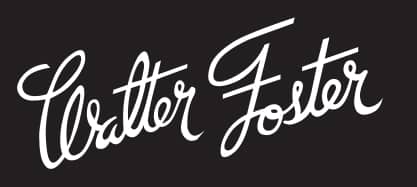
6 Orchard Road, Suite 100
Lake Forest, CA 92630
quartoknows.com
Visit our blogs at quartoknows.com
This book has been produced to aid the aspiring artist. Reproduction of work for study or finished art is permissible. Any art produced or photomechanically reproduced from this publication for commercial purposes is forbidden without written consent from the publisher, Walter Foster Publishing.
IF YOU HEAR A VOICE WITHIN YOU SAY, YOU CANNOT PAINT, THEN BY ALL MEANS PAINT, AND THAT VOICE WILL BE SILENCED.
Vincent van Gogh, Dutch painter
Oil paint is a forgiving and versatile medium. Its slow drying time and vibrant colors make it ideal for beginning artists. This book will teach you myriad oil-painting concepts and techniques, including brushstrokes, understanding form, painting various subjects, and more. There are many styles of painting, from abstract to hyperrealism. The lessons demonstrated in this book are primarily landscapes and objects.
Just as athletes must practice at their chosen sport to improve their skills and strength, artists of all levels must practice, practice, practice. The exercises in this book will help you improve as an artist as you practice them multiple times and on different surfaces.
Set target dates for completing the lessons. Choose times to practice painting when you wont be disturbed. Select music that inspires you.
A blank canvas on an easel can be a challenging sight for an artist of any skill level. Placing a three-dimensional world into a two-dimensional one requires knowledge. Learning to paint is essentially knowing how to observe and see relationships between objects.
Artists of all levels become frustrated at times. Realize that this can happen, but that you have the ability to work through that frustration. Always have at least three canvases on hand, and work on several pieces at a time. Then, if you get stuck on one painting, you can take a break and move to another.
No two painters are alike. Some work in detail, such as John James Audubon in his book The Birds of America. Some painters paint quickly without much detail. Most are somewhere in between. You will find your style. Begin by studying technique, composition, color, and value. You have an unlimited number of subjects to observe and from which to create unique impressions. Your paintings will be unlike anyone elses work.
Congratulations on your new exploration into oil painting. The world needs more artists like you.

Started

EVERY ARTIST WAS FIRST AN AMATEUR.
Ralph Waldo Emerson, American essayist and poet
If youre happy with the quality of your materials, youre more likely to get out there and paint. If you simply walk into your local art-supply store, you might become overwhelmed with the amount of equipment available for oil painters. Its not important to get every possible piece of equipment when youre just starting out. Its more important and economical over time to get the essential items. When purchasing supplies, choose the best possible quality for your budget. Poor-quality materials can cause you unnecessary frustration. Good tools, however, will make your work easier and more fun.

tip
FOCUS ON THESE ITEMS FIRST: PAINTS, BRUSHES, SURFACES, AN EASEL, AND A PALETTE.
Oil paint is made by grinding pigment (color) with natural oil. The final color can be transparent, translucent, or opaque. The benefit of painting with oil is that it dries slower than acrylics and watercolor. This allows you to work on your painting for a longer period of time and to rework areas if necessary. One of the drawbacks, however, is that cleanup can be messier and may involve the use of solvents, such as turpentine.

Turpentine fumes can be harmful, so always use it in a well-ventilated area. There are low-odor products available, but their fumes can still be harmful to your health. Consider using a protective face mask when working with turpentine. Linseed oil and oil of spike lavender are less-toxic options for thinning your paint.
Another option is to paint with water-soluble oils. These paints are thinned with water instead of solvents and are cleaned using mild soap and water. Water-soluble paints are an excellent choice for beginners.
Prices can vary between brands and colors. The quality can also be quite different between brands. Watch for sales at art-supply stores and online. When starting out, buy paint that fits in your budget. As you experiment, you will find brands and colors that you prefer.
There are differences between professional- and student-grade paints. Student-grade paints contain less pigment and are less expensive, while the pigment in professional-grade paint gives it a more intense color. You might consider selecting professional grade for brighter colors and student grade for neutral colors.
You will find that you use more of the lighter paint colors. Consider buying a larger tube of white paint, because you will use more white than any other color. You will need a smaller tube of darker paints, such as phthalo blue. When mixing your tints, youll use a larger amount of white than blue.
Font size:
Interval:
Bookmark:
Similar books «Portfolio: Beginning Oil»
Look at similar books to Portfolio: Beginning Oil. We have selected literature similar in name and meaning in the hope of providing readers with more options to find new, interesting, not yet read works.
Discussion, reviews of the book Portfolio: Beginning Oil and just readers' own opinions. Leave your comments, write what you think about the work, its meaning or the main characters. Specify what exactly you liked and what you didn't like, and why you think so.

